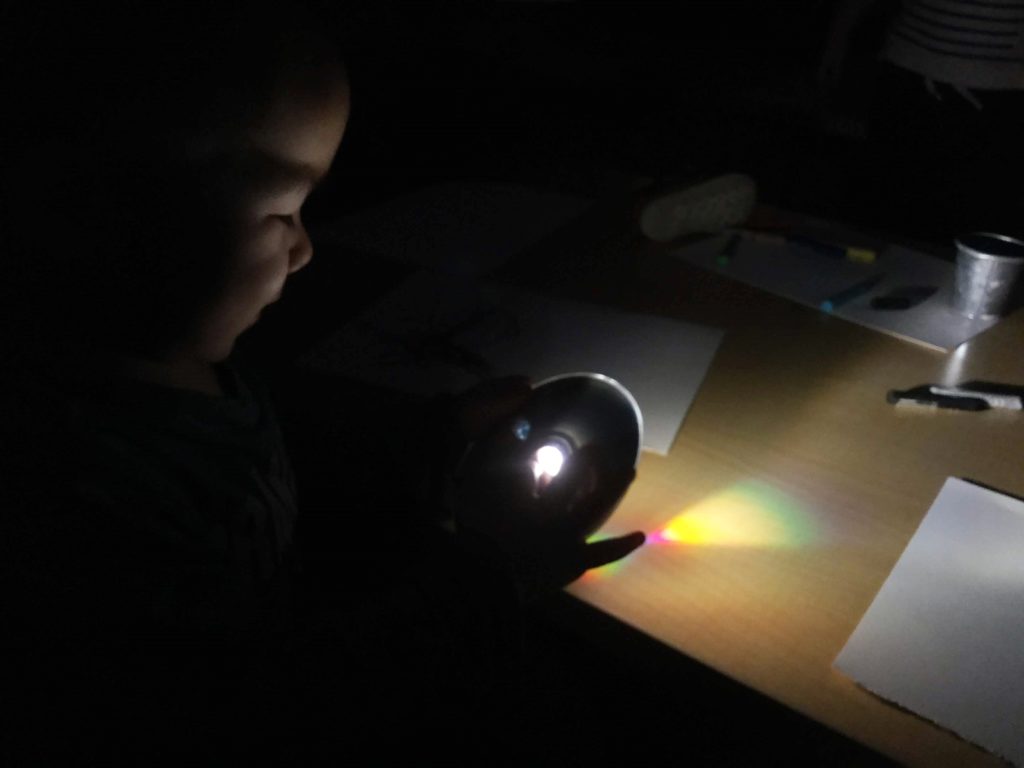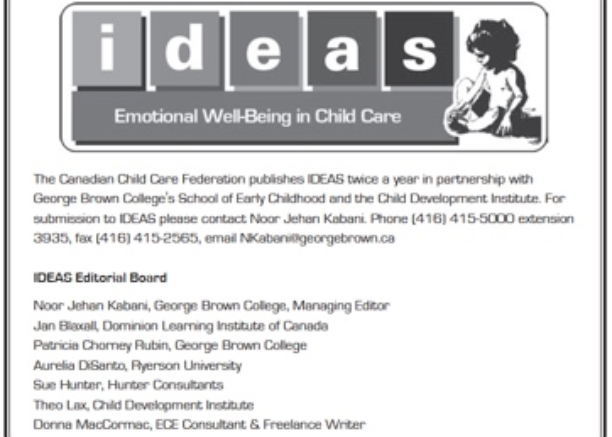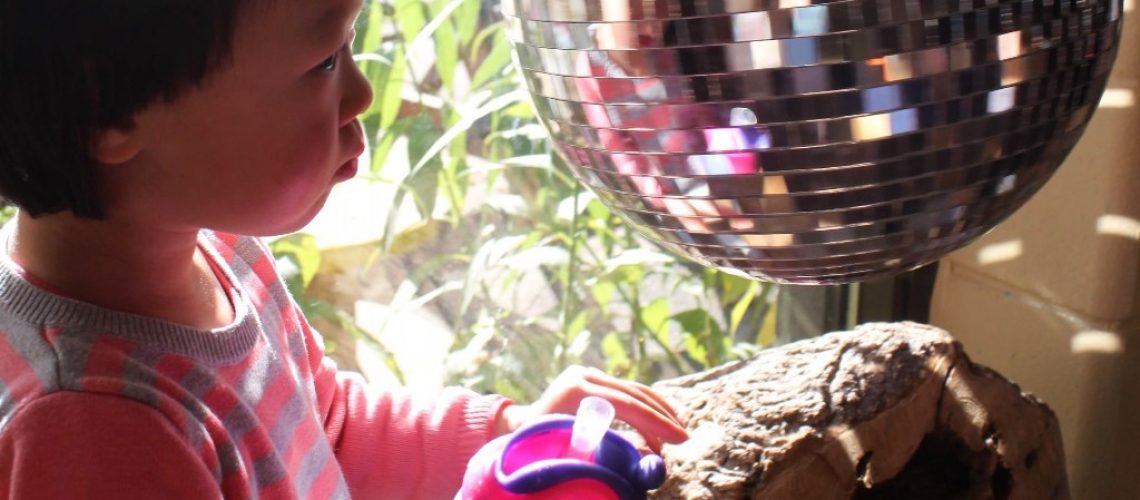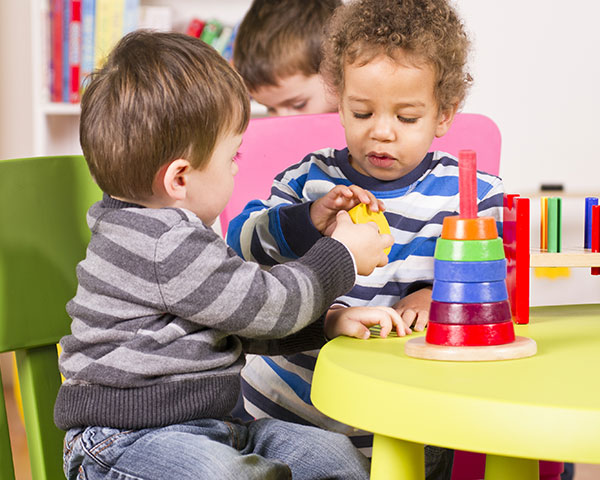
Children’s Spirituality: Implications for Practice
B. Pytka & D. Mirkovic Toronto, Ontario
In How Does Learning Happen? Ontario’s Pedagogy for The Early Years, the Ontario Ministry of Education (MEDU) (2014) states that it is important to consider spirituality in children’s experiences. This view supports recognizing the need and importance of a holistic approach in children’s well-being, learning, and growth. MEDU also acknowledges that this perspective requires “a shift in mindsets and habits” for many educators (2014, p. 17). This is because our experiences, perceptions, and beliefs influence our pedagogical choices that may or may not promote children’s learning through spiritual expressions. Providing early childhood educators with resources and opportunities to engage in discussions may influence a change in their thinking and, most importantly – their pedagogy.
Discover our full list of ECE topics
The intent of this paper is to bring attention to considering spirituality in children’s everyday experiences. It concentrates on pointing out activities and pedagogical practices that may support educators in creating a more inclusive and health promoting environment. The pedagogical practices suggested here are only to create a space for further exploration and discussions. In brief, the paper invites early childhood educators to engage in discussions about the consideration and exploration of spirituality in their own programs.
“ We invite early childhood educators to engage in discussions about the consideration and exploration of spirituality in their own programs”
D. Mirkovic & B. Pytka Toronto, Ontario
Understanding Spirituality
When engaging in discussion about children’s spirituality with early childhood educators or early childhood education students, they often seem to be puzzled and experience difficulties in defining or describing this subject. This confusion perpetuates their challenges in seeing the role of spirituality in pedagogy and early years programs’ curriculums. Such a common response to making sense of spirituality is not unusual. Many attempts to describe spirituality take various directions and are quite dynamic and fluid, leading to further philosophical questions. Most often, however spiritualty is presented as being associated with feelings of belonging and connectedness, especially with strong relationships to people and surroundings (Baskin, 2016; Bone, 2005; Bone, 2008). Additionally, for many people, spirituality is conceptualised as both outside (Kennedy & Duncan, 2006; Mata, 2014) and stemming from religious beliefs and values (Hart, 2011). Even in the absence of religious frameworks, spirituality is seen as something that is essential and beneficial to us. Therefore, spirituality may be considered as an additional dimension in learning and understanding, a channel of making sense of our experiences. We believe that considering spirituality may help us to understand and engage in learning in more meaningful and complex ways. Paying attention to spirituality may contribute to more inclusive pedagogy.

Pedagogy
Research suggests that as there are many ways to understand and define spirituality, the implication of spirituality in early childhood pedagogy and curriculum should likewise take various paths. It is important to accept this diversity of perspectives. Specific activities and practices for a program should be chosen based on the culture and experiences of all members in that particular child care program. This is because spirituality can lead to the strengthening of children’s identity (Hart, 2011).
Many of the activities and practices suggested in existing relevant literature are already familiar in early childhood education settings and are probably not associated with spirituality. This is perhaps because considering spirituality through activities requires us to be more explicit and intentional in providing a space for children’s deeper engagement. Here are some examples of activities that are explored by researchers:
| Activities | Ways in which an activity may promote the expression of children’s spirituality | Considerations for educators |
| Music and movement 1 Humour 2 | Promotes connectedness, Sense of belonging, Promotes feeling of joy, concern for others and imagination. | Consider influence of people and physical places we experience in a moment of being together. |
| Sharing food 3 | Promotes opportunities for children to explore their identity | Consider sharing food as engagement in a ritual of shared values, beliefs, customs and behaviours. |
| Contemplation4 Mindfulness | Promotes regulation of attentionPromotes emotional and cognitive self regulation | Encourage self expression, reflection and social connectedness |
| 1Nortje & Van Der Merwe, 2016. 2Mata-McMahon, 2017 3Bone, 200 5. 4Shapiro et al., 2015. |
Children’s Spirituality and Relationships
Research suggests that spirituality may empower strong connections/relationships between children and their environment. Through these relationships, children develop and strengthen their identity and make sense of their cultural values, beliefs, and norms. Therefore, concentrating on building relationships in early childhood education programs is imperative to children’s spirituality. Furthermore, as stated in How Does Learning Happen? “there is perhaps no relationship that holds greater responsibility or reward than the relationships [educators] develop with children” (Ontario Ministry of Education, 2014, p. 4). Spending time to build relationships with each child in a program can help the educator get to know everyone better and learn about the unique drive and calling of each individual. A positive relationship with an educator gives children a sense of belonging and encourages them to express themselves freely. The feeling of belonging and acceptance for many children can contribute to the creation of an environment of trust and mutual respect. As Hart (2011) points out, such an environment contributes to children feeling true to themselves. An environment of trust, mutual respect, and close relationships promotes the nurturing of spirituality. This environment allows children to fully express themselves and discuss and voice their opinions about topics that matter to them (Hart, 2011).
Close relationships that children build with their educators may further promote development of their identity. In a study related to Aboriginal children’s well-being, an individual’s identity was found to be connected to confidence, honour and acceptance “of who you are; having self-respect; loving yourself; and having a sense of authenticity” (Tremblay, Gokiert, Georgis, Edwards, & Skrypnek, 2013, p. 3). Therefore, strong relationships between children and early childhood educators, as well as children and other children may initiate the nurturing of spirituality.
Nurturing Spirituality Through Pedagogical Documentation
Looking at spirituality from a perspective of the interconnectedness of being part of “the greater whole” (Baskin, 2016, p. 51) suggests that spirituality may be expressed and experienced through pedagogical documentation. Pedagogical documentation is about the recording of children’s learning and experiences as well as educators’ thinking in a way that could support reflection, and thereby deeper engagement in experiences. Approaching pedagogical documentation as something “alive and from which we can produce a multiplicity of differentiated knowledge from a specific event” (Lenz Taguchi, 2010, p. 67) may help us to better understand children’s spiritual expressions. This view requires the acknowledgement that learning about children should not come from observation at a distance, but from engagement in their world. Assuming Lenz Taguchi’s (2010) theories are correct that everything is intra-connected and inter-connected, educators need to engage with children using spiritual expression, and become equal participants in their experiences through documentation. Only then we can create an opportunity for ourselves to become a part of all the connections between humans, materials and the natural world, and experience children’s learning in a more holistic way. Engaging in children’s activities and pedagogical documentations promotes a subjective experience rather than concentration on theories or the seeking of evidence of a child’s progress and development. Engaging with children helps an educator see “beyond [what] we already think, [and what] we know as a truth about children’s development and learning” (Lenz Taguchi, 2011, p. 47). This helps us to experience the authenticity of a child and of ourselves. When we are able to connect with our own feelings and learning during the encounter with pedagogical documentation and express our thoughts honestly, we allow ourselves to focus on things that are important to us and to therefore gain a deeper understanding. Not concentrating on external acknowledgements or approvals may lead us to a feeling of intrinsic joy during the encounter. Additionally, this extends an invitation for children to respond with their natural openness and curiosity.
Considering early childhood education pedagogy and practices from a relational materialist’s view compels us to rethink our anthropocentric and logocentric position in practice. Overemphasising our perceptions and the importance of language in pedagogical documentation makes the experience less dynamic and authentic. Written descriptions of children’s learning may limit the writer and reader’s engagement, and their opportunity to draw inclusive interpretations. This is especially true in our child care programs here in the Greater Toronto Area due to an enormous number of early childhood educators whose English is not a first language. Concentration on written communication and expressions only create barriers for many educators to deeply engage in children’s learning. Therefore, considering other forms of expression (not just logocentric forms) such as visual arts may promote more authentic engagement of educators in children’s experiences. Visual arts open rich possibilities of self-expression. Unlike language, words and speech, artistic expression creates a space for communicating and exploring the whole spectrum of thoughts and emotions, even those that we do not fully understand. Furthermore, visual arts connect and engage people in a more inclusive way. Visual arts promote conversations where creativity and diversity are not only welcomed, but highly valued.
Moments of Silences as Possible Moments of Spiritual Expressions
In his article related to analyzing children’s silence in research, Spyrou (2016) argues that children’s silence (even though considered as not observable) may provide us with richer and completed information. Spyrou (2016) claims that children use silence for various reasons. During interactions with adults, for example, they may choose silence as they respond to a power imbalance, or they just may not want to come across as offensive, ignorant, or not knowing the answer. This also suggests that moments of silence for children may be related to not wanting to disclose their true identity. This is evident in Hart’s (2011) retelling of her personal experiences of immigrating to Canada. Her true identity rooted in culture and religious practices found to be a constraint in the new society and culture. This led her to feel unable to freely express herself. She felt pushed to accept the traditions and forms of expressions of others. According to Matoba Adler (2005), this kind of silence is called situational silencing. Children are expected to behave in a way that is culturally appropriate by the culture that they are not familiar with. This may have a huge effect on children’s spiritual expressions, identity, and sense of belonging. Therefore, educators need to be aware and alert of such situations and help children find their own position and voice. It is important that children freely express themselves. They should be provided with opportunities to challenge cultural and religious beliefs and to create their own understanding of the world. Therefore, acknowledging and attending to children’s silence and positive relationship between educators and children may encourage children to express themselves and welcome spirituality.
Conclusion
Since early childhood is seen as a foundational period in children’s health, behaviour, and learning, exploring and paying attention to children’s development of spirituality is imperative. Spirituality supports children’s sense of belonging through the establishment of strong connections with people and places that may help children develop an awareness of their influences and interconnectedness with their surroundings. Spirituality, through a more holistic perspective may provide children and educators with opportunities to initiate more meaningful and relevant learning. Therefore, spirituality may allow for an environment of empowerment, acceptance, harmony, and for a more authentic way of being together.
We hope that this discussion about children’s spirituality will start a conversation about how early childhood educators can engage in the practice of creating an environment where thinking differently and innovatively is encouraged and promoted. Considering spirituality in early childhood education can help us to break away from our traditional and routine thinking and practices and to pursue a new adventure that is more relevant and inclusive.
Children’s Spirituality: Implications for Practice
References
Baskin, C. (2016). Spirituality: The core of healing and social justice from an Indigenous perspective. New Directions for Adult and Continuing Education, 2016(152), 51–60. DOI: 10.1002/ace.20212.
Bone, J. (2005). Breaking bread: Spirituality, food and early childhood education. International Journal of Children’s Spirituality, 10(3), 307-317. DOI: 10.1080/13644360500347607
Bone, J. (2008). Creating relational spaces: Everyday spirituality in early childhood settings. European Early Childhood Education Research Journal, 16(3), 343-356. DOI: 10.1080/13502930802292122
Hart, L. (2011). Nourishing the authentic self: Teaching with heart and soul. In N. N. Wane, E. L. Manyimo & E. J. Ritskes (Eds), Spirituality, education & society, (pp. 37- 48). Rotterdam, The Netherlands: Sense Publishers.
Kennedy, A., & Duncan, J. (2006). New Zealand children’s spirituality in Catholic schools: Teachers’ perspectives. International Journal of Children’s Spirituality, 11(2), 281-292. DOI: 10.1080/13644360600797297
Lenz Taguchi, H. (2010). Going beyond the theory/practice divide in early childhood education. Introducing an intra-active pedagogy. New York, NY: Taylor & Francis.
Lenz Taguchi, H. (2011). Investigating learning, participation and becoming in early childhood practices with a relational materialist approach. Global Studies of Childhood, 1(1), 36-50.
Mata, J. (2014). Sharing my journey and opening spaces: Spirituality in the classroom. International Journal of Children’s Spirituality, 19(2), 112-122. DOI: 10.1080/1364436X.2014.922464
Mata-McMahon, J. (2017). Spirituality and humor: Making connections for early childhood education. International Journal of Children’s Spirituality, 22(2), 170-178. DOI: 10.1080/1364436X.2017.1287681
Matoba Adler, S. (2005). Asian American children developing voices. In L. Diaz Soto & B. Blue Swadener (Eds.), Power and voice in research with children (pp. 117-124). New York, NY: Peter Lang.
Nortje, E., & Van Der Merwe, L. (2016). Young children and spirituality: Understanding children’s connectedness in a group music class. International Journal of Children’s Spirituality, 21(1), 3-18. DOI: 10.1080/1364436X.2016.1138932
Ontario Ministry of Education. (2014). How does learning happen? Ontario’s pedagogy for the early years. Queen’s Printer for Ontario. Retrieved from http://www.edu.gov.on.ca/childcare/HowLearningHappens.pdf
Shapiro, S. L., Lyons, K. E., Miller, R. C., Butler, B., Vieten, C., & Zelazo, P. D. (2015). Contemplation in the classroom: A new direction for improving childhood education. Educational Psychology Review, 27(1), 1-30. DOI: 10.1007/s10648-014-9265-3
Spyrou, S. (2016). Researching children’s silences: Exploring the fullness of voice in childhood research. Childhood, 23(1), 7-21. DOI: 10.1177/0907568215571618
Tremblay, M., Gokiert, R., Georgis, R., Edwards, K., & Skrypnek, B. (2013). Aboriginal perspectives on social-emotional competence in early childhood. The International Indigenous Policy Journal, 4(4). DOI: 10.18584/iipj.2013.4.4.2













